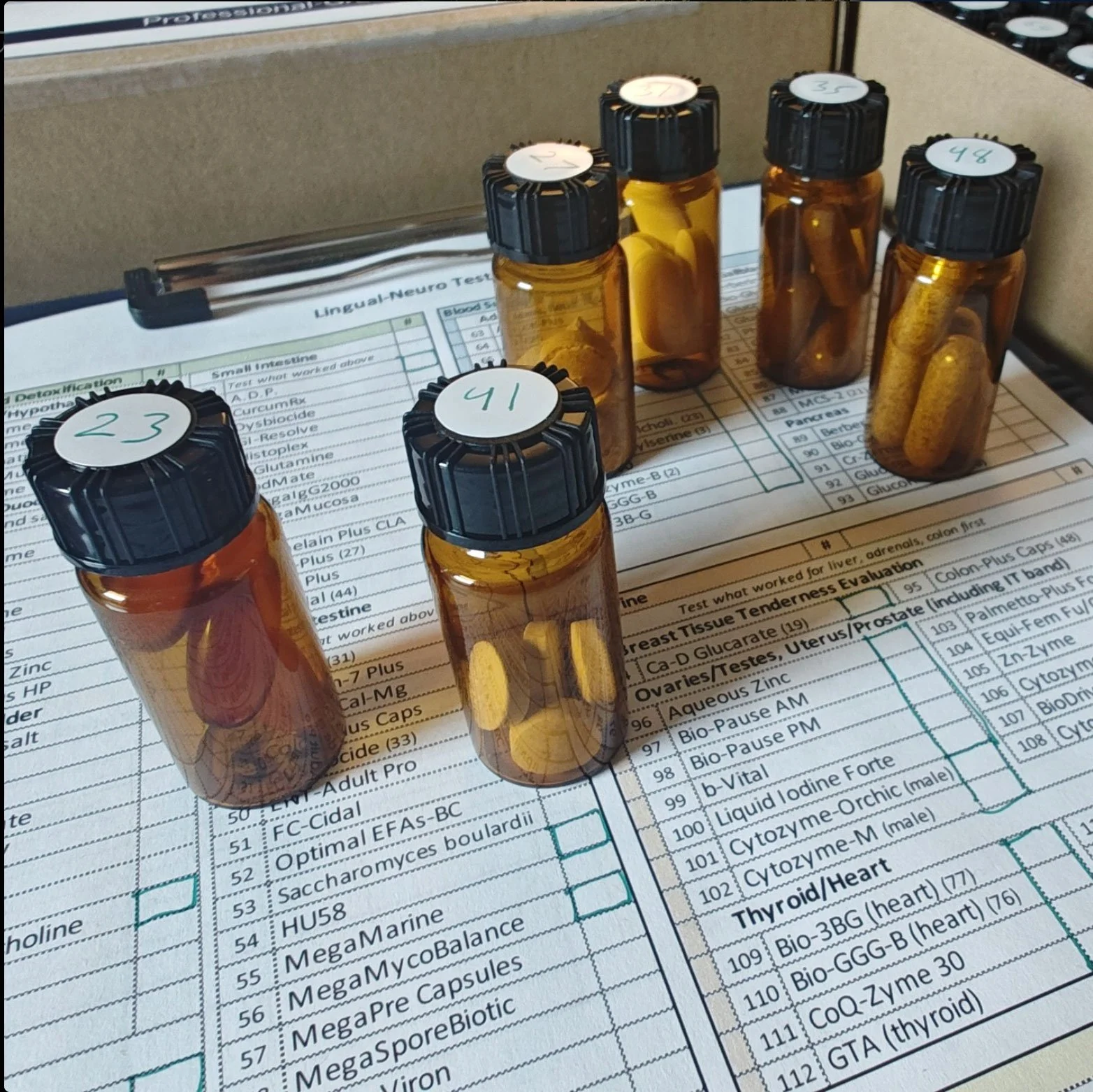Lingual-Neuro Testing
In my practice, I use a technique called Lingual-Neuro Testing (LNT) — a hands-on method that may help reveal how your body responds to specific nutrients or functional supports in real time.
A systematic approach to identifying supportive nutrients and functional aids.
Here’s how it works: you'll lie comfortably on a table while I gently press on a series of reflex points that often correspond to specific physiological systems. If a point feels tender, you’ll rate it on a 0–10 scale. After establishing a baseline, we introduce a nutrient or support (typically held on the tongue briefly), and then reassess the same points. A decrease in tenderness may indicate a positive neurological response to that input.
In many sessions, the effect is surprisingly clear — clients sometimes ask whether I’m even applying pressure anymore. In fact, when clients test points on themselves, they often observe similar shifts in sensitivity.
While the experience is subjective, I've seen consistent and meaningful patterns emerge across people of all ages. In some cases, responses during LNT have aligned with findings from lab testing such as GI-MAP panels, particularly when issues like microbial imbalance or pathogenic load are suspected. That said, individual variability is real: clients on certain medications or those with higher muscle mass may experience dampened sensitivity at reflex points.
Like any modality, Lingual-Neuro Testing is one tool among many — it does not replace clinical diagnostics, but it can offer real-time insight that helps guide a more tailored and responsive approach to nutritional therapy.
Client Education
One of the unique benefits of this approach is that, once taught, clients can learn to use it on themselves. Monitoring changes in point sensitivity over time may help track progress or identify when additional support is needed.
While Lingual-Neuro Testing shows compelling anecdotal and clinical promise, it’s important to acknowledge that scientific validation remains limited — largely due to the subjective and neurologically complex nature of the technique. The subtle, individualized responses involved make large-scale, blinded studies inherently challenging. Still, many practitioners report consistent, reproducible patterns in clinical use, suggesting LNT may reflect underlying neurovisceral connections worthy of further study.
To learn more about the experience:
Check out this podcast that describes Lingual Neuro Testing
This description from Biotics Canada (PDF) that provides additional context
This video that shows what the experience looks like.
